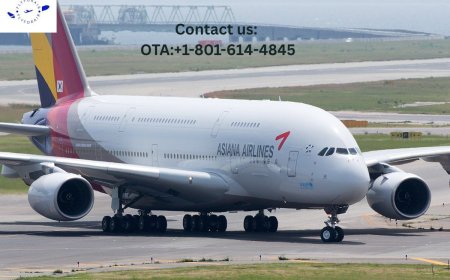How to plan a Miami corporate party
How to Plan a Miami Corporate Party Planning a Miami corporate party is more than just organizing a social gathering—it’s a strategic investment in team morale, client relationships, and brand perception. With its vibrant culture, year-round sunshine, world-class venues, and diverse culinary scene, Miami offers an unparalleled backdrop for corporate events that leave a lasting impression. Whether
How to Plan a Miami Corporate Party
Planning a Miami corporate party is more than just organizing a social gathering—it’s a strategic investment in team morale, client relationships, and brand perception. With its vibrant culture, year-round sunshine, world-class venues, and diverse culinary scene, Miami offers an unparalleled backdrop for corporate events that leave a lasting impression. Whether you’re hosting a year-end celebration, a product launch, a client appreciation event, or a leadership retreat, a well-executed corporate party in Miami can elevate your company’s image and foster deeper connections among attendees.
However, the very qualities that make Miami ideal—its popularity, high demand for premium venues, and logistical complexity—also make planning a challenge. Without careful coordination, what should be a seamless, memorable experience can turn into a stressful, costly misstep. This guide provides a comprehensive, step-by-step roadmap to planning a Miami corporate party that aligns with your business goals, respects your budget, and delivers exceptional attendee satisfaction.
By the end of this guide, you’ll understand how to select the perfect venue, design an engaging program, manage vendors, navigate local regulations, and leverage Miami’s unique assets to create an event that reflects your brand’s values while exceeding expectations.
Step-by-Step Guide
Define Your Objectives and Audience
Before you even begin scouting venues or sending out invites, clarify the purpose of your event. Are you rewarding employees for a successful quarter? Welcoming new clients? Celebrating a milestone? Each objective demands a different tone, format, and budget allocation.
Identify your primary audience: Is this an internal team event, a mix of employees and clients, or exclusively for high-value partners? The composition of your guest list will influence everything—from the dress code to the entertainment choices. For example, a client-facing event may require a more formal atmosphere with premium catering and branded giveaways, while an internal celebration might prioritize fun, interactive experiences like live music or themed activities.
Create a brief event charter that includes:
- Primary goal (e.g., boost morale, strengthen client loyalty)
- Target audience (number of attendees, job roles, client tiers)
- Desired emotional outcome (e.g., inspired, connected, impressed)
- Non-negotiables (e.g., dietary restrictions, accessibility needs, budget cap)
This document becomes your decision-making compass throughout the planning process.
Set a Realistic Budget
Miami’s event scene is diverse, ranging from budget-friendly beachside rentals to luxury penthouse venues costing thousands per hour. To avoid overspending, establish a clear budget framework early.
Break your budget into key categories:
- Venue rental (30–40% of total)
- Catering and beverages (25–30%)
- Entertainment and audiovisual (10–15%)
- Decor and branding (5–10%)
- Transportation and parking (5%)
- Staffing and security (5%)
- Contingency fund (5–10%)
Remember: Miami’s peak season (November–April) drives up prices. If your event isn’t date-sensitive, consider scheduling during the shoulder months (May–June or September–October) for better rates and fewer crowds. Also, factor in hidden costs like service charges (often 20–25%), sales tax (7%), and gratuity.
Use a spreadsheet to track every expense. Assign a point person to monitor spending in real time and flag potential overruns before they occur.
Select the Perfect Venue
The venue sets the tone for your entire event. Miami offers an extraordinary variety—from sleek downtown lofts and art deco hotels to private beach clubs and rooftop gardens with panoramic ocean views.
Consider these factors when evaluating venues:
- Capacity: Ensure the space comfortably accommodates your guest count with room for movement, seating, and activity zones.
- Location: Proximity to major hotels, airports, and public transit matters. South Beach is iconic but congested; Brickell offers urban convenience; Coconut Grove provides a relaxed, tropical vibe.
- Amenities: Does the venue include in-house catering, AV equipment, Wi-Fi, parking, or valet? Outsourcing these services adds cost and complexity.
- Outdoor Access: Miami’s weather is mostly favorable, but have a rain plan. Look for venues with covered patios, retractable roofs, or indoor-outdoor flow.
- Brand Alignment: A tech startup might prefer a modern, minimalist warehouse in Wynwood; a luxury real estate firm might choose a historic mansion in Coral Gables.
Visit shortlisted venues in person—ideally at the same time of day your event will occur. Check lighting, acoustics, and accessibility. Ask about noise ordinances, curfews, and permit requirements, especially for outdoor events.
Plan the Event Timeline
A well-structured timeline keeps your event flowing smoothly and prevents awkward lulls or rushed transitions.
Sample 4-hour corporate party schedule:
- 6:00–6:30 PM: Guest arrival, welcome drinks, light appetizers
- 6:30–7:00 PM: Short welcome speech or video presentation
- 7:00–8:30 PM: Open bar, full dinner service, networking
- 8:30–9:00 PM: Awards, recognition, or special announcement
- 9:00–10:30 PM: Live music or DJ, dancing, dessert station
- 10:30–11:00 PM: Farewell, gift distribution, departure assistance
Build in buffer time—15 minutes between major segments allows for transitions, photo ops, or unexpected delays. Assign a dedicated event coordinator to manage timing and cue staff.
Curate the Catering Experience
Miami’s culinary scene is one of its greatest assets. Leverage it. A corporate party is not the place for generic buffet fare. Offer a curated menu that reflects local flavors while accommodating dietary needs.
Consider these options:
- Station-based dining: Cuban sandwich bar, ceviche station, plantain tacos, or artisanal cheese and charcuterie.
- Family-style platters: Ideal for larger groups; encourages interaction.
- Food trucks: Great for casual, high-energy events—think gourmet empanadas or artisanal ice cream.
- Signature cocktails: Create a Miami-themed drink—think guava mojito, passionfruit margarita, or a sparkling rum spritz.
Always request tasting appointments. Confirm that the caterer can handle your guest count, serve at the correct temperature, and provide adequate staffing. Clearly communicate dietary restrictions: vegan, gluten-free, nut allergies, halal, kosher. Provide labeled options for each.
For beverage service, consider a hosted bar with a premium selection (craft beer, wine, spirits) and a cash bar for additional items. Avoid open bars with unlimited liquor—this can lead to overconsumption and liability issues.
Choose Entertainment That Resonates
Entertainment should enhance, not distract. The goal is to create an immersive, enjoyable atmosphere—not a nightclub.
Popular Miami corporate entertainment options:
- Live Latin bands: Salsa, bachata, or Afro-Cuban jazz energize crowds and reflect Miami’s cultural roots.
- DJ with curated playlists: Mix upbeat hits with lounge tracks for a balanced vibe.
- Interactive experiences: Photo booths with Miami-themed props, live painters, or cocktail-making demos.
- Cultural performances: Flamenco dancers, steel drummers, or capoeira artists add unique flair.
Ensure the entertainment volume and style suit your audience. A law firm’s gala may prefer a jazz trio; a marketing agency might thrive with a DJ spinning top 40 and hip-hop.
Always confirm technical requirements: power outlets, stage size, sound checks, and backup equipment. Assign someone to liaise with performers throughout the night.
Design Branding and Decor
Even a corporate party is a branding opportunity. Subtle integration of your logo, colors, and messaging reinforces identity without feeling intrusive.
Branding ideas:
- Custom cocktail napkins or stirrers with your logo
- Projected digital signage at entry or bar
- Themed centerpieces that echo your company’s mission
- Wayfinding signage with your brand font and colors
Decor should complement the venue, not compete with it. In a historic venue, use minimalist floral arrangements. In a modern loft, add bold lighting or hanging installations. Avoid over-decorating—clutter reduces perceived sophistication.
Lighting is critical. Use uplighting to highlight architectural features, string lights for ambiance, and spotlights for the stage or photo area. Dimmable lighting allows you to shift from dinner to dancing seamlessly.
Coordinate Logistics and Transportation
Miami traffic is notorious. Make it easy for guests to arrive and depart.
- Arrange complimentary valet or parking validation for key guests.
- Partner with ride-share services (Uber, Lyft) to offer discounted codes or dedicated pickup zones.
- For large groups, consider shuttle buses from major hotels or downtown hubs.
- Ensure ADA-compliant access and designated drop-off points.
For international guests, include transportation tips in invitations: nearest airport (MIA or FLL), estimated drive times, and recommended hotels.
Manage Invitations and RSVPs
Use a digital invitation platform like Evite, Paperless Post, or Eventbrite to track responses, collect dietary preferences, and send reminders. Include:
- Event name, date, time, and location (with Google Maps link)
- Dress code (e.g., “Cocktail Attire,” “Miami Glam,” “Business Casual”)
- RSVP deadline (at least 2 weeks prior)
- Special instructions (parking, parking validation, shuttle info)
- Contact person for questions
Send reminders at 10 days, 3 days, and 24 hours before the event. For VIPs, follow up with a personal call or email.
Prepare for Contingencies
Miami’s weather can shift quickly. Even if your event is indoors, have a plan for:
- Rain: Can guests be moved indoors? Do you have tents or covered walkways?
- Power outage: Backup generators? Battery-powered lighting?
- Vendor no-show: Have backup contacts for caterers, DJs, or AV technicians.
- Medical emergency: Ensure staff know where first aid kits are located. Consider hiring an EMT on-site for events over 100 guests.
Print a printed emergency contact list and distribute it to key team members. Include venue manager, security, local police non-emergency line, and medical services.
Post-Event Follow-Up
The event doesn’t end when the last guest leaves. Follow-up is where loyalty is solidified.
- Send a personalized thank-you email within 48 hours, including highlights, photos, and a link to a photo gallery.
- Include a short survey (via Google Forms or SurveyMonkey) asking about experience, favorite elements, and suggestions for future events.
- Share a recap video or social media carousel featuring key moments—tag attendees and use event hashtags.
- Debrief internally: What worked? What didn’t? What should be repeated or avoided next time?
This feedback loop is invaluable for refining future events and demonstrating your organization’s commitment to continuous improvement.
Best Practices
Align the Event with Your Corporate Culture
A corporate party should feel authentic to your brand. If your company values innovation, incorporate tech elements like AR photo filters or digital guestbooks. If sustainability is core, use compostable serveware and partner with local, organic vendors. Don’t force a theme that doesn’t fit—guests notice inauthenticity.
Prioritize Inclusivity
Miami is one of the most culturally diverse cities in the U.S. Ensure your event reflects that. Offer multilingual signage if needed. Avoid culturally insensitive themes (e.g., “Tropical Luau” with stereotypical costumes). Provide non-alcoholic beverage options that are creative and plentiful. Consider religious dietary needs and prayer spaces if your guest list includes diverse faiths.
Use Technology to Enhance, Not Complicate
Apps like AllSeated or Cvent help with seating charts and RSVP tracking. QR codes on tables can link to your company’s website, event photos, or a digital thank-you card. Live polling tools like Slido can engage guests during speeches or Q&As. But avoid overloading attendees with tech—keep it intuitive.
Engage Local Vendors
Miami has a thriving ecosystem of small businesses: florists, photographers, musicians, and caterers who bring unique local flavor. Supporting them builds community goodwill and often results in more personalized service. Look for vendors with proven experience in corporate events—not just weddings.
Control Alcohol Responsibly
Overindulgence can turn a celebration into a liability. Limit drink tickets, serve food continuously, and train staff to recognize signs of intoxication. Consider a “designated driver” incentive—free non-alcoholic cocktails or a free ride home for those who volunteer.
Document Everything
Take photos and videos throughout the event—not just for social media, but for internal records. Document vendor contracts, invoices, and communication logs. This protects you in case of disputes and helps streamline future planning.
Train Your Team
Assign clear roles: one person handles registration, another manages AV, a third coordinates with vendors. Hold a pre-event briefing 24 hours prior. Everyone should know the timeline, emergency contacts, and their responsibilities. A well-coordinated team makes the event feel effortless.
Measure Success Beyond Guest Count
Success isn’t just about attendance numbers. Track:
- Survey response rates and satisfaction scores
- Engagement during activities (e.g., how many used the photo booth)
- Post-event social media mentions and sentiment
- Client retention or employee feedback in follow-up meetings
Use these metrics to justify future budgets and refine your approach.
Tools and Resources
Event Planning Platforms
- Cvent: Comprehensive platform for registration, venue sourcing, and budget tracking.
- Eventbrite: Ideal for ticketing and RSVP management with built-in analytics.
- AllSeated: 3D venue mapping and seating chart design.
- Google Workspace: Use Sheets for budget tracking, Docs for checklists, and Calendar for timeline coordination.
Venue Discovery Tools
- Miami Dade County Event Venue Directory: Official list of city-owned and permitted spaces.
- Peerspace: Book unique spaces like rooftop terraces, art galleries, and historic mansions.
- EventUp: Curated list of Miami venues with photos, pricing, and reviews.
Catering and Beverage Resources
- Miami Catering Association: Vetted list of local caterers with corporate experience.
- Local Food Halls: Wynwood Food Hall and Miami Design District offer multiple vendors under one roof—great for diverse menus.
- Wine & Spirits Distributors: Contact local distributors like Southern Wine & Spirits for bulk pricing and custom cocktail development.
Entertainment and Production
- Entertainers of Miami: Agency specializing in Latin bands, DJs, and performers for corporate events.
- Sound and Light Miami: Professional AV and lighting rentals with on-site technicians.
- Miami Art Walk: Connect with local artists for live painting or installations.
Logistics and Compliance
- Miami-Dade County Special Events Permit Portal: Required for public space use, amplified sound, or alcohol service.
- City of Miami Business Tax Receipt: Verify all vendors have proper licensing.
- Transportation Apps: Uber for Business and Lyft for Events offer invoicing and fleet coordination.
Marketing and Follow-Up
- Canva: Design digital invites, signage, and social media graphics.
- Adobe Express: Create professional recap videos quickly.
- SurveyMonkey: Collect post-event feedback with customizable templates.
- Instagram and LinkedIn: Use branded hashtags and geotags to extend reach.
Real Examples
Example 1: Tech Startup Year-End Party at The Miami Beach EDITION
A SaaS company with 80 employees hosted its annual celebration at The EDITION’s rooftop terrace. Objectives: Boost morale, showcase innovation, and reward top performers.
Execution:
- Used a “Digital Dreams” theme with LED floor tiles and projection-mapped walls.
- Featured a live coding challenge with prizes sponsored by a tech partner.
- Catering: Miami-style ceviche bites, plantain crostini, and a “Cloud Cocktail” (gin, elderflower, lime).
- Entertainment: A local electronic DJ with custom visuals synced to the music.
- Post-event: Sent personalized digital thank-you cards with a link to the event photo gallery and a free month of their software.
Result: 97% satisfaction rate in post-event survey. Employee retention increased by 15% over the next quarter.
Example 2: Real Estate Firm Client Appreciation at The Betsy Hotel
A luxury real estate agency hosted 120 clients at The Betsy’s historic courtyard for a “Miami Modern” evening.
Execution:
- Invitations designed as vintage Miami postcards with QR codes to property listings.
- Catering: Cuban-style passed hors d’oeuvres, artisanal cheeses, and a mojito bar with local rum.
- Entertainment: A jazz quartet playing Cuban standards and bossa nova.
- Branding: Custom coasters with property photos and the firm’s tagline.
- Guest gift: Handmade ceramic mugs from a local artist, engraved with the client’s name.
Result: Three new high-value client contracts signed within two weeks. The event became an annual tradition.
Example 3: Nonprofit Gala at The Fillmore Miami Beach
A nonprofit focused on ocean conservation hosted its annual fundraiser at The Fillmore, a historic theater turned event space.
Execution:
- Theme: “Beneath the Waves” with coral-inspired lighting and recycled decor.
- Catering: 100% plant-based menu featuring local seafood alternatives and vegan Cuban dishes.
- Entertainment: A documentary screening followed by a Q&A with a marine biologist.
- Interactive element: A digital “pledge wall” where guests could commit to sustainability actions.
- Partnerships: Collaborated with local eco-brands for gift bags.
Result: Raised 30% more than the previous year’s gala. Media coverage in Miami New Times and local TV.
FAQs
What is the best time of year to host a corporate party in Miami?
The ideal window is November through April, when temperatures are mild (70–80°F) and humidity is lower. This is peak season, so book early. For budget-conscious planners, May–June or September–October offer fewer crowds and lower prices, though afternoon thunderstorms are more common.
Do I need a permit to host a corporate party in Miami?
Yes, if your event is held in a public space, uses amplified sound, serves alcohol, or exceeds 50 guests. Permits are issued by Miami-Dade County or the City of Miami. Your venue often handles this, but confirm in writing. Failure to obtain permits can result in fines or shutdowns.
How far in advance should I book a venue for a Miami corporate party?
For peak season (November–April), book 6–9 months in advance. For off-season, 3–4 months is usually sufficient. Popular venues like The Ritz-Carlton, The Setai, or private beach clubs fill up a year ahead.
What are common mistakes to avoid when planning a Miami corporate party?
Common pitfalls include:
- Underestimating travel time for guests
- Choosing a venue without checking noise ordinances
- Overlooking accessibility requirements
- Offering only alcohol-heavy drink options
- Not having a rain plan for outdoor events
- Trying to do too much—focus on quality over quantity
Can I serve alcohol at my Miami corporate party?
Yes, but only if you obtain a special event liquor permit and hire licensed servers. Many venues have in-house bars that handle this for you. Never allow BYOB unless explicitly permitted. Always monitor consumption and have a plan for intoxicated guests.
How do I make my corporate party stand out in Miami’s competitive scene?
Focus on authenticity and personalization. Use local talent, highlight Miami’s culture, and create moments that feel exclusive—like a surprise performance, a custom cocktail named after your CEO, or a surprise gift tied to your company’s mission. Guests remember how you made them feel, not just what they saw.
What’s the average cost of a Miami corporate party?
Costs vary widely. A mid-sized event (100–150 guests) typically ranges from $15,000 to $50,000, depending on venue, catering, and entertainment. Luxury events can exceed $100,000. Always allocate 10% for contingencies.
Should I hire a professional event planner?
If your team lacks experience or you’re managing multiple priorities, yes. A professional planner saves time, reduces stress, and often negotiates better vendor rates. For events over $25,000 or with complex logistics, the ROI is usually worth it.
Conclusion
Planning a Miami corporate party is a blend of art and logistics—requiring creativity, precision, and cultural awareness. The city’s energy, beauty, and diversity provide an unmatched canvas, but success hinges on thoughtful planning, attention to detail, and a deep understanding of your audience’s needs.
By following this guide—from defining your objectives and selecting the right venue, to curating memorable experiences and measuring impact—you transform a simple gathering into a strategic asset. A well-executed event doesn’t just entertain; it strengthens relationships, reinforces brand values, and leaves a legacy that extends far beyond the final toast.
Miami is more than a location—it’s an experience. When you align your corporate party with the spirit of the city and the soul of your organization, you don’t just throw a party. You create a moment that people talk about, remember, and look forward to again.
Start early. Plan deliberately. Celebrate boldly. And let Miami do the rest.























